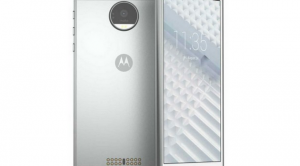Last Updated on September 20, 2024 by Mathew Diekhake
 When it comes to mobile devices, it is Apple that is known as the largest company in the world. They are the ones often leading the way, or at least, so it seems to the general public.
When it comes to mobile devices, it is Apple that is known as the largest company in the world. They are the ones often leading the way, or at least, so it seems to the general public.
As for Android, well, it is known as the company that just copies Apple or just keeps doing stupid things—not my opinion, it’s just what I see as the general consensus around the Web when I read.
The latest reason for this was Google’s own fault where they confessed to making their new emoji faces that are coming out with Android 8.0 Oreo to have updated faces that look more similar to the ones on iOS. Some of them are blatant copies, and anything that did look unique to Android is about to disappear and be replaced with something else that an iOS user can easily identify.
The reason for the change is pretty apparent: it’s not because they didn’t like their own ideas, it’s more because so many people are using the iOS platform and Google wants those users to be able to understand what the Android users are sending them.
It’s a move that doesn’t make a whole lot of sense, to begin with, because if you’ve tried sending an emoji cross-platform between iOS and Android, you’d know that it hardly ever works that way. But still, it’s a change that Android wanted.
Android is a lot more than just a company that copies Google though. It’s a misconception to think that because it’s an operating system available on cheaper devices that it is also just an operating system that is not as good. I’ve tried to teach this to people regarding the Windows operating system for a long time.
Android goers have some distinct advantages over iOS users, one of them being that they can install custom ROMs and get root access very easily. In order to do both all you need is to install a custom recovery image.
Details of Note
- The TWRP Recovery images found in this guide are only developed for the Motorola Moto X4 smartphone. Do not attempt installing them on another device.
- You can follow this guide using any of the big three operating systems: Windows, Linux, and Mac. You just need to download the right platform tools package for your operating system which you will see when you visit the Android Studio webpage.
Files Required
- Download on your computer the platform-tools from the Android SDK.
- Download the latest TWRP image: TWRP for Android 7.1.1 (Nougat) | TWRP for Android 8.0 (Oreo)
How to Install TWRP Recovery on Motorola Moto X4 Smartphone
1. Scroll down to the Android command line tools section of the Android Studio webpage and install the SDK tools package, making sure to choose the right one for your operating system, i.e., download the one for Windows if your computer is running on Windows.
2. Once you have the SDK Manager extracted on the computer, select to install only the platform-tools, so you end up with the adb and fastboot binaries.
3. If you’re using a version of the Windows operating system, make sure you install the universal ADB drivers, so you have the right drivers installed, both for the adb and the Motorola Moto X4 device.
4. Pick up the Motorola Moto X4 smartphone and navigate to the Settings > About and then tap on where it shows the build number at least seven times. It’ll then unlock the Developer Options menu. Press the Back button and then enter the newly unlocked Developer Options menu from the Settings and enable the USB debugging mode.
5. Next, boot it into bootloader mode by first powering it off and then booting it up by holding the Volume Down and Power buttons.
Use Google or Bing for further instructions if you can’t get it to boot into bootloader mode, or just use the command from the command line shown later in the guide.
6. Connect the Motorola Moto X4 smartphone to the computer using its USB cable.
7. Now on the computer open the Command Prompt and and type the following command and then hit Enter on your keyboard to get your Google Pixel C into bootloader mode if you weren’t successful with it before:
adb reboot bootloader
8. Copy the latest TWRP Recovery image that you downloaded so that it’s in the same folder as the adb and fastboot binaries. Rename the image “twrp.img” by right-clicking on the image and selecting the option to rename it.
9. Now type the following command into the command line and then hit Enter on your keyboard to flash the TWRP image:
fastboot flash recovery twrp.img
10. Type the following command and then press Enter on your keyboard and then as soon as your device reboots, hold the key combination for recovery mode so it first-time boots directly into TWRP:
fastboot reboot
You should now find that TWRP Recovery is installed on the Motorola Moto X4 smartphone. If you don’t boot it directly to the recovery mode sometimes the work you do can be wiped, and you would find the stock recovery back on the device. When that happens, you have no choice but to follow the guide again.
